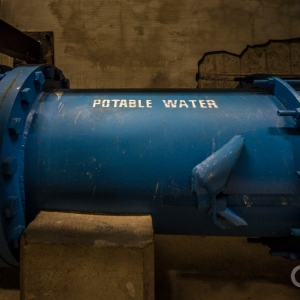The Stream, November 6, 2019: U.S. EPA Set to Weaken Regulations on Water Pollution from Coal Ash
The Global Rundown
The U.S. Trump administration moves to weaken regulations on water pollution caused by coal plant waste. An early warning method indicates an 80 percent chance that an El Niño weather pattern will occur in 2020. Florida unveils a new online dashboard that allows residents to track water quality in the state’s lakes and rivers. Brazil’s mining regulator says mining company Vale SA likely cost lives by failing to disclose issues with a dam that collapsed in January. The latest forecast for the U.S. Great Lakes shows that Lakes Michigan and Huron are likely to set record-high levels near the end of winter.
“The rule announced today puts millions of people’s drinking water in jeopardy. When tragedy strikes from a flood, hurricane or a breach from an unlined coal ash pit or pond, everyday citizens are left with contaminated water.” –Mustafa Santiago Ali, director of the EPA’s office of environmental justice under the Obama administration, in reference to a new EPA proposal to relax laws pertaining to water pollution from coal plants. The Obama-era rules require coal plants to frequently monitor their coal ash and keep up-to-date technology to avoid arsenic, lead, selenium, and other coal ash components from seeping into water supplies. The New York Times
Latest WaterNews from Circle of Blue
Speaking of Water: Michael Cohen on the Salton Sea — In this episode of Speaking of Water, host Eileen Wray-McCann talks with Michael Cohen, a senior researcher at the Pacific Institute, about the Salton Sea.
What’s Up With Water – November 4, 2019 — This week’s edition of What’s Up With Water includes coverage on an Australian lawsuit over PFAS, a new dam on the Mekong River, and Legionnaires’ Disease in America.
HotSpots H2O: South Africa Imposes Emergency Water Restrictions to Prevent Another “Day Zero” — Less than two years after Cape Town’s “Day Zero” water crisis, warm, dry weather has prompted South African water suppliers once again to impose emergency conservation measures.
By The Numbers
80 percent Chance of an El Niño weather pattern emerging in 2020, based on a new early warning model. The method analyzes changing air temperatures across the Pacific to determine the likelihood of the weather pattern, which is associated with severe droughts and intense rainfall in countries around the Pacific. Reuters
Science, Studies, and Reports
On Tuesday, Brazil’s mining regulator criticized mining company Vale SA for failing to report several problems with the Brumadinho dam, which collapsed in January and killed over 250 people. The regulator claims that Vale’s failure to disclose the problems kept the agency from taking actions that could have prevented the disaster. Reuters
On the Radar
This week, Florida introduced a new online dashboard that allows residents to track water quality in major lakes and rivers across the state. The website includes details on algae blooms, the red tide, and information on environmental projects. U.S. News & World Report
U.S. Great Lakes Superior, Erie, and Ontario all reached record-high water levels in 2019, and the latest forecast indicates that Lakes Michigan and Huron will likely follow suit in February or March 2020. Analysts say the record highs are likely to occur due to an above-average season starting point and the wetter-than-average winter that is predicted across the Great Lakes basin. MLive
Kayla Ritter is a recent graduate of Michigan State University, where she studied International Relations and Teaching English to Speakers of Other Languages. She is currently based in Manton, Michigan. Kayla enjoys running, writing, and traveling. Contact Kayla Ritter







Leave a Reply
Want to join the discussion?Feel free to contribute!